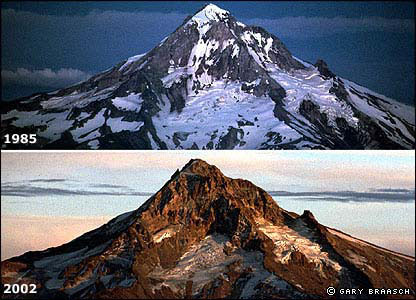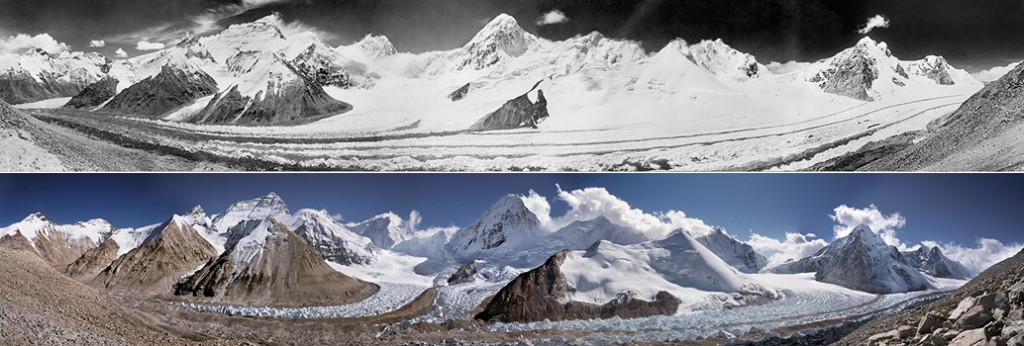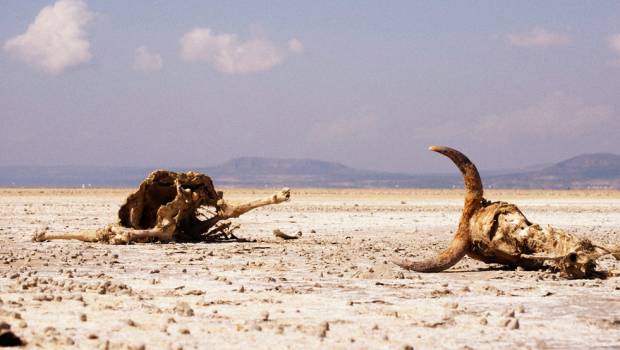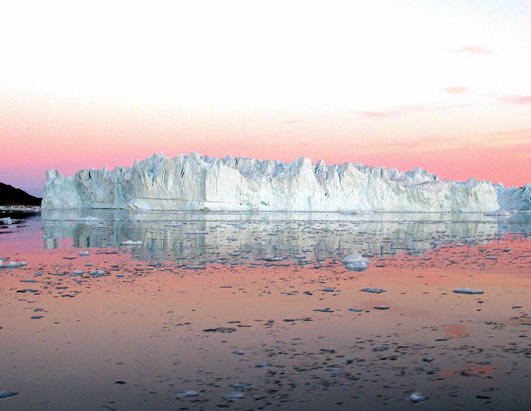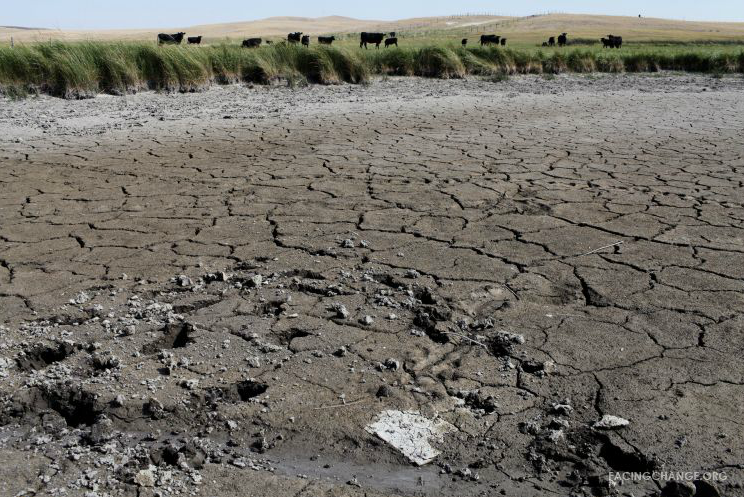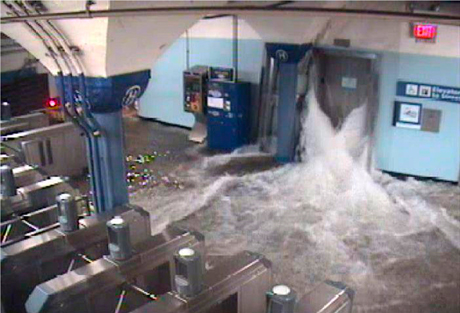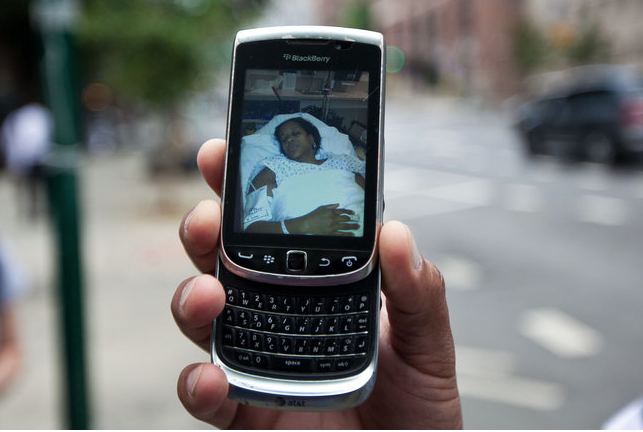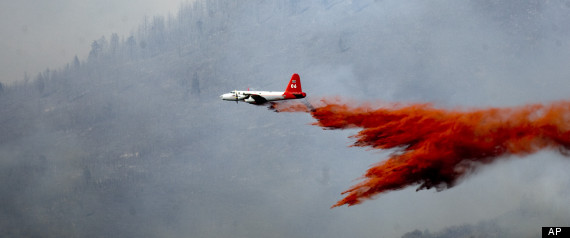The Best of 2012 photography collections are ablaze with color, and the above average temperatures and continuing drought keep talk of global warming in the air, so what should a documentary photographer do? Take us to Siberia, of course.
One species follows another across the frozen landscape. The reindeer know the way, as the Nenets people have been moving them between summer and winter pastures for centuries. Sebastiao Salgado’s photograph might as well be from some ice planet in an outer galaxy, the barren field of snow and sky is so uniformly stark, harsh, and endless. And yet you can almost feel the body heat of the herd, its precious calories being expended in the empty abstraction of the arctic air, and then of the few people and dogs trailing behind them. The photo at once stretches life almost to the breaking point, as if the herd were a single strand of genetic material in some petri dish, but at the same time makes you yearn to be closer. And while the two species are clearly separate, and the human train obviously smaller and more precarious, they are intimately joined in their symbiotic journey. As David Levi Strauss has observed, “Salgado’s subjects are seen only and always in relation” (Between the Eyes, p. 44).
Strauss’s essay on Salgado captures another feature of this photograph as well, which is its “extraordinary balance of alterity and likeness, of metaphoric and documentary functions” (42). The photo is unquestionably of an experience very few humans have, and yet it is immediately recognizable as an example of organic life forms co-existing, and, if you look closely, of the more organized form of human association, at once more powerful and fragile for that. Likewise, the photo need be only a photo of reindeer and nomadic herders in Sibera–there aren’t too many other places or species that could qualify–and yet it quickly doubles as a symbol of something else, something more general and fundamental to living with others in a condition of necessity.
But for how long? What might seem to be a timeless image of natural cycles and sustainable culture is also a witness to change. Reindeer and Nenets alike are threatened by climate change and the encroachment of civilization–if you want to call it that–as the extraction industries move into the region. Although the arctic environment seems to be the present threat, in fact it has been home to both species for centuries, and now energy production to heat and power the rest of the world is the real danger. This is not to say that living on the edge of survival should be romanticized, or that the Nenets don’t need or want to avail themselves of modern goods. But the photo can challenge complacency and rationalization by revealing another dimension of common life: that all humanity lives close to extinction, and that survival requires learning how to live with sustainable resources rather than simply plunder the earth for profit.
But let’s not forget the need to balance symbolic and documentary functions. Ironically, another ice age is coming, albeit one that will be delayed a bit while this civilization burns up the oil, gas, and forests. Some say it will begin in 1500 years, which is not that long: roughly from the fall of Rome until today. It’s not too hard to imagine that a scene like the one above could become the norm rather than the rare exception. Survival won’t be a metaphor, but a lived reality. Something that can be seen today, if one is willing to accept the photographer’s challenge to see humanity in relation to itself, other species, and its future–if it is to have one.
Photograph by Sebastião Salgado/Amazonas/nbpictures. Additional slides can be viewed here. (Note that the photo was taken in March, when the herd was being moved north to the summer pastures.)
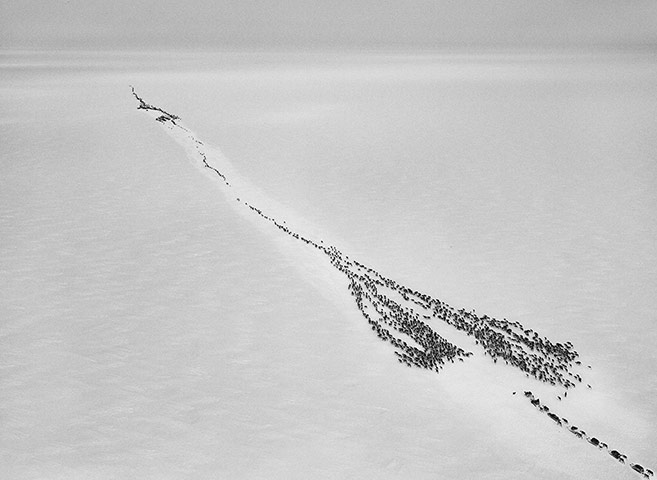
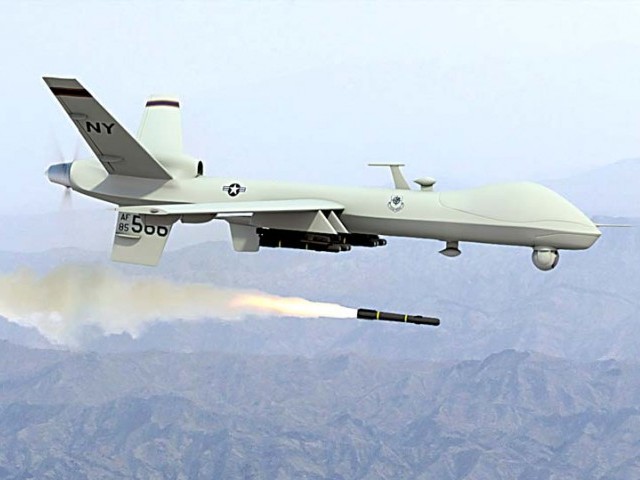
![image_thumb[3]](http://www.nocaptionneeded.com/wp-content/uploads/2012/11/image_thumb3.png)
